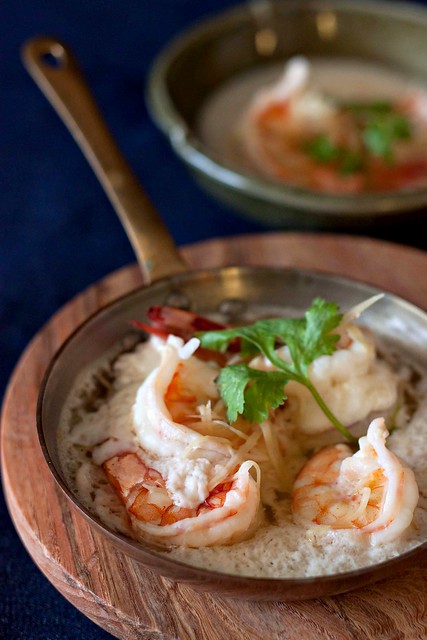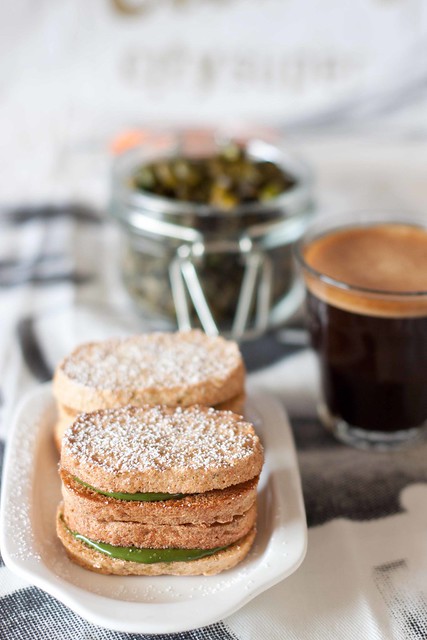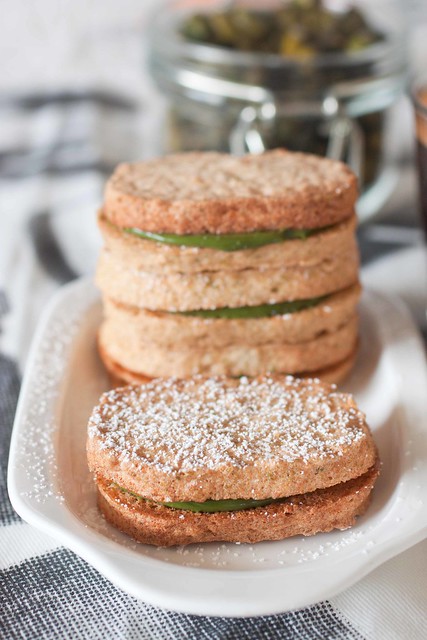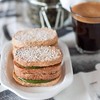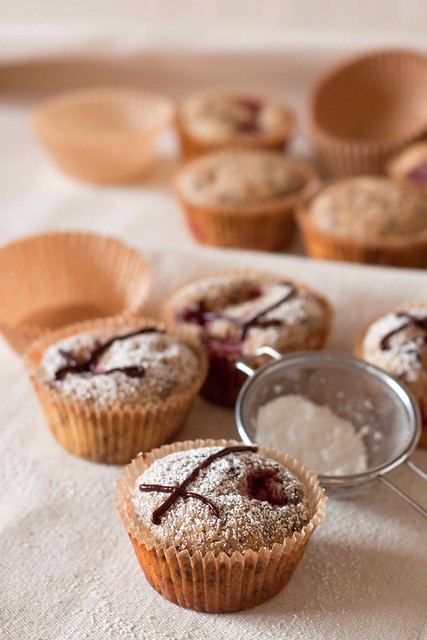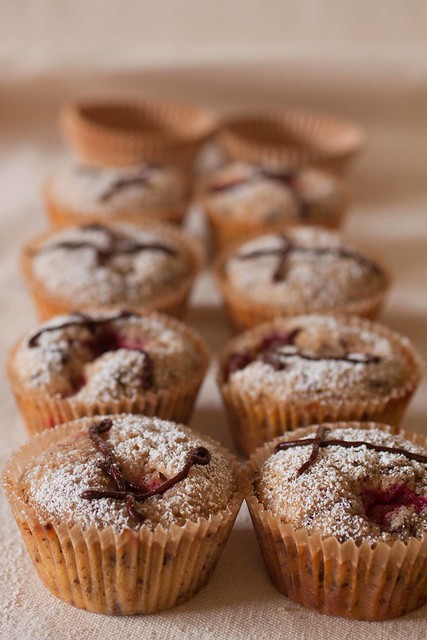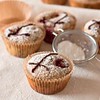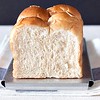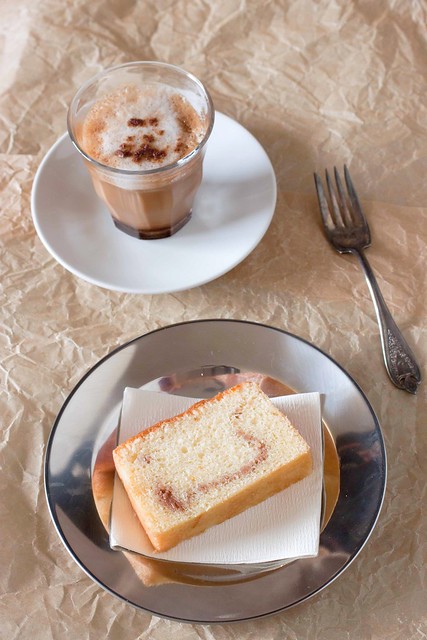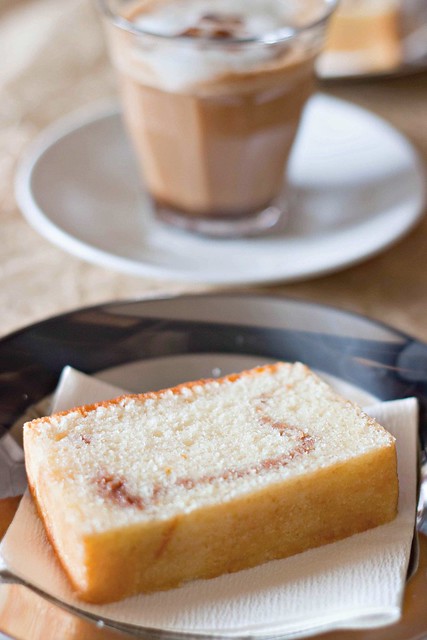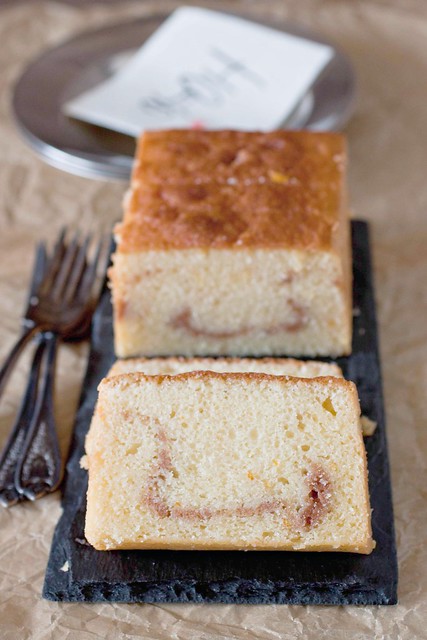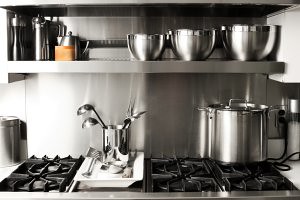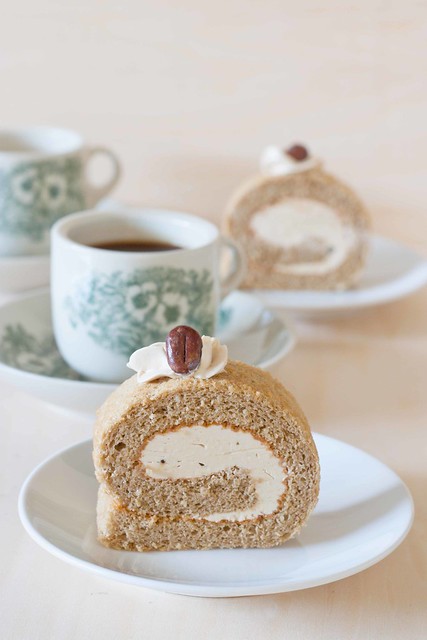
Pin It
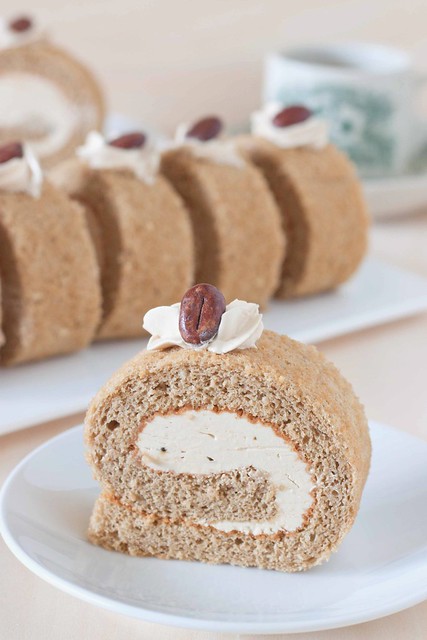
Pin It
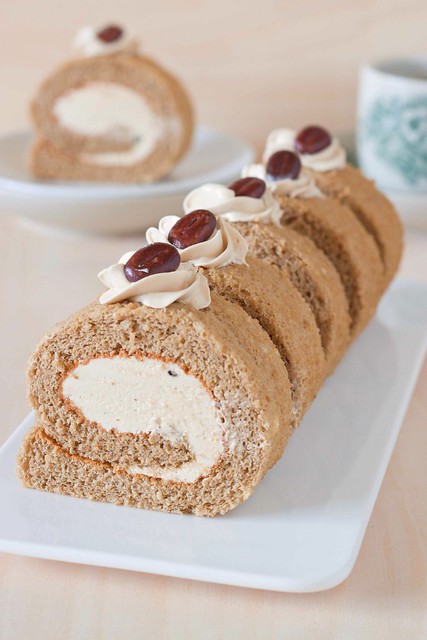
Pin It

Pin It
The swiss roll, I believe, is one cake that will never cease to intimidate me. At one point, I used to bake this everyday, just so that I could get enough practice to get it right. There are 3 components to the process of baking a Swiss Roll- getting the sponge base to behave; preparing the filling and rolling the cake to achieve a neat pinwheel roll.
I have struggled many times with the sponge base. As basic as it may be, the sponge is possibly the least attempted cake genre in my baking repertoire. Butter cake, pound cake and even chiffon had often claimed preference over the humble sponge. In particular, I am absolutely terrified of the Genoise sponge - often the very first lesson in any baking course. I recall a basic genoise sponge baking class where we were required to hand whisk the eggs (no kitchenaid!) to ribbon stage. My cake turned out dry, coarse and crumbly. Subsquent attempts on the Genoise did not yield any spectacular results... dryness and coarseness are the usual issues. Subsequently, I avoided the Genoise totally and worked only with the souffle sponge (where egg yolks and whites are whisked separately).
So why have I returned to the genoise for this recipe? Laziness, plain old laziness. The genoise sponge uses a simpler process which does not require the eggs to be beaten separately. I felt this time, my eggs were whisked almost just right. The air cells of the cake, as expected is not as fine as the souffle sponge but at least this time, the texture remained soft and tender. It did not dry out on me even without the use of syrup - which is important- for a dried out sponge will be impossible to roll up.
When paired with the coffee flavoured Swiss Meringue buttercream, this cake was not shabby at all.
What I would do to improve this next time? Whisk the eggs at a lower speed to minimise the air cells in the cake.... and then, maybe I can claim victory over the Genoise sponge and move on to Lesson 2 in baking class... :)
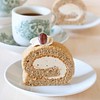
Coffee Swiss Roll
Recipe : (Adapted from Kuru kuru Roll Cake)
Sponge
3 Whole eggs
1 Egg yolk
80g Castor sugar
80g All purpose flour
20g Butter melted
30ml Milk
1tbsp Instant coffee powder
Butter Cream
75g Egg white
70g Castor sugar
Pinch Salt
225g Unsalted butter
1tsp Vanilla Extract
2tsp Instant Expresso powder
Method :
Sponge:
1. Line a 30cmx30cm cake pan with parchment paper. Preheat oven to 200C.
2. Place eggs and egg yolk in a bowl with sugar and whisk over a water bath until sugar is completely dissolved and eggs become foamy. Remove from heat. (Take care not to rest the bowl on the boiling water)
3. Continue whisking the egg yolks using a stand mixer at medium speed until ribbon stage is reached. (at this point, when a figure 8 is drawn with the egg foam, it should clearly retain its mark and not disappear into the batter)
4. Sieve flour over the egg batter and fold with a spatula to incorporate.
5. Mix butter, milk and coffee powder together and add to (4). (warming the liquid mixture will make it easier to incorporate with the batter)
6. Fold carefully from bottom up to incorporate liquid with batter.
7. Pour batter into lined baking tray. Spread out batter evenly with a scraper.
8. Gently tap the baking tray a few times to release trapped big bubbles.
9. Bake at 200C for 12mins.
10. Remove tray from oven and lift cake from baking tray onto a wire rack. Place the whole cake on the rack into a big plastic bag to cool. (This will help to prevent cake from drying out)
Swiss Meringue Butter Cream
1. Place egg whites, sugar and salt in a mixing bowl. Whisk egg whites over a water bath until sugar and salt completely dissolves.
2. Remove from heat and continue whisking the egg whites using a stand mixer.
3. Whisk at low speed and gradually increase speed. Whisk the egg whites until glossy and firm peaks are formed. (The meringue should cool down by then)
4. Lower mixing speed and add butter in spoonfuls until smooth and fluffy.
5. Mix coffee powder with vanilla extract and add to (4).
6. Change balloon whisk to paddle and continue mixing for another 10mins at low speed to deaerate the cream.
Assembly :
1. Remove liner paper on sponge cake.
2. Place sponge sheet on a sheet of parchment paper with the baked face facing upwards. Spread/pipe butter cream over sponge sheet and roll the cake up like a sushi roll, tucking in the ends with a ruler.
With the cake still wrapped in parchment paper, chill until cake form is firmed up.
3. Slice and serve.




